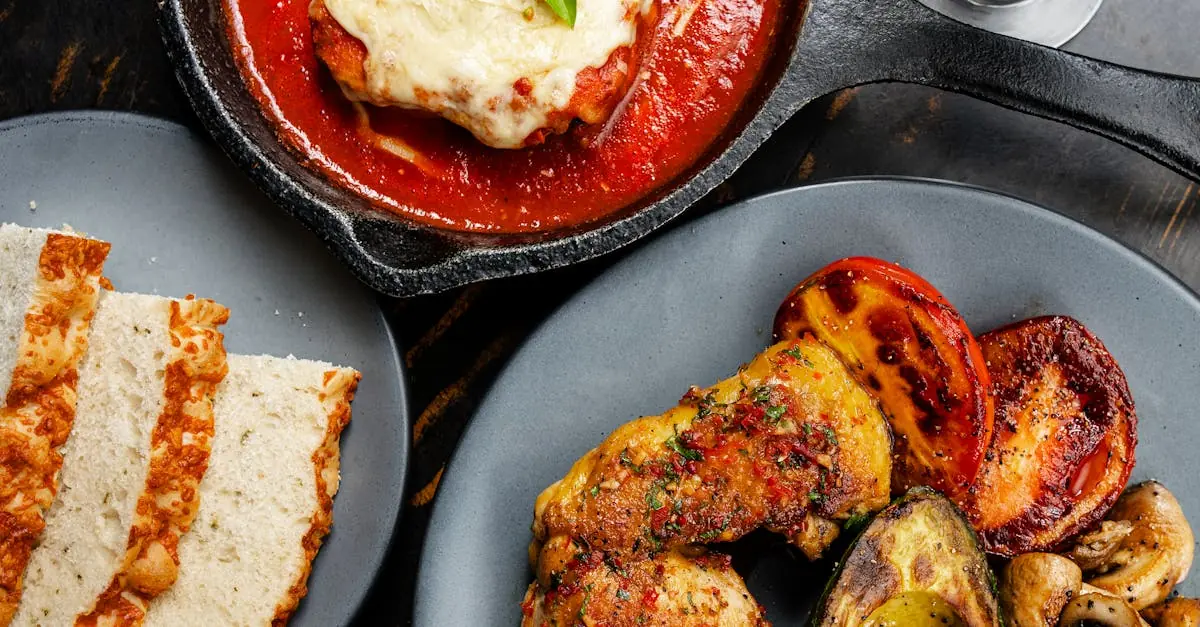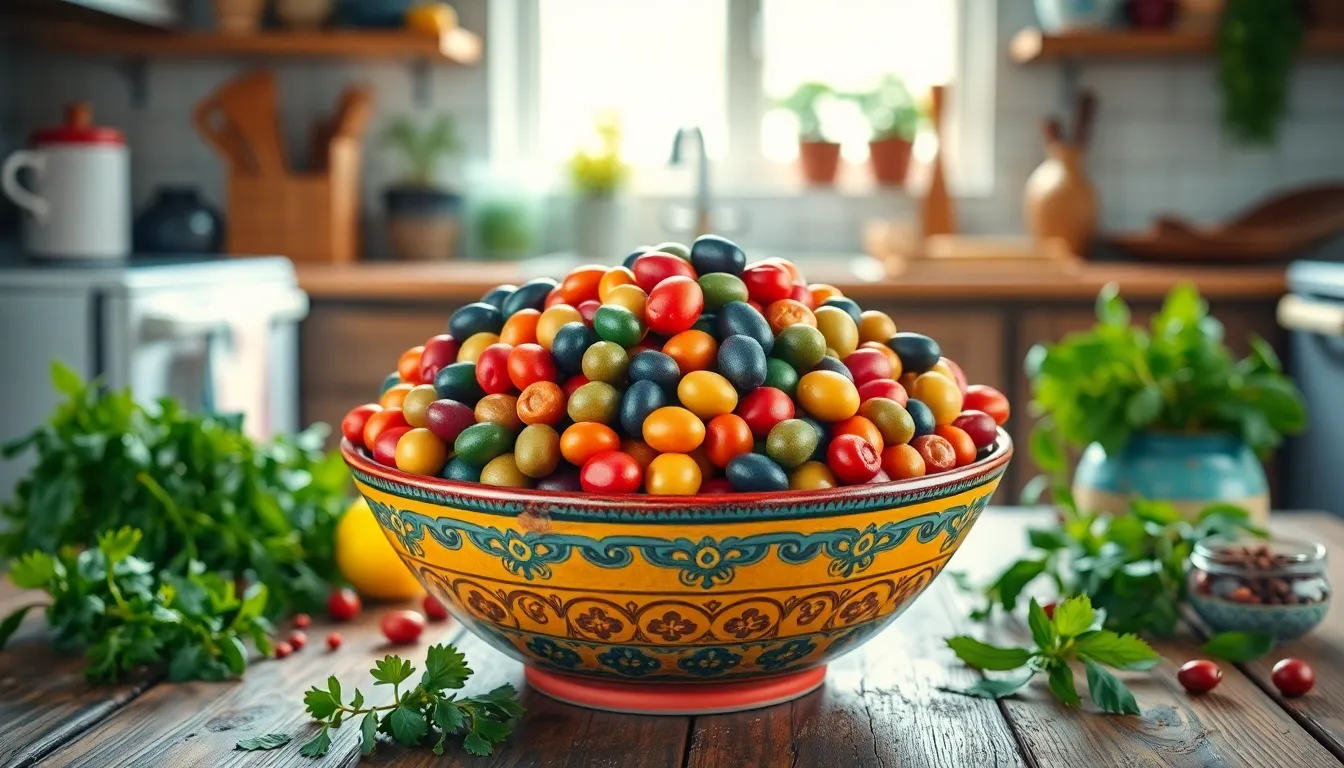Cooking chicken in cast iron is like giving your dinner a warm hug—crisp on the outside, juicy on the inside, and packed with flavor. If you’ve never tried it, you’re missing out on a culinary experience that’ll make your taste buds dance. Forget about dry, bland chicken; this method turns the ordinary into extraordinary, all while making you look like a kitchen wizard.
But wait, there’s more! Cast iron skillets are not just for show; they’re the unsung heroes of the kitchen. They heat evenly, retain warmth like a cozy blanket, and can even go from stovetop to oven without breaking a sweat. So grab that trusty skillet and get ready to impress your friends, family, or even just yourself. Cooking chicken in cast iron isn’t just a meal; it’s a delicious adventure waiting to happen.
Table of Contents
ToggleBenefits Of Cooking Chicken In Cast Iron
Cooking chicken in cast iron skillets offers various advantages that enhance both the cooking process and the dish’s overall quality. This method is favored by many for its ability to create delicious meals.
Superior Heat Retention
Heat retention stands out as a significant benefit. Cast iron skillets maintain consistent temperatures, ensuring chicken cooks evenly. High heat offers a perfect sear on the chicken, locking in moisture effectively. When the skillet retains heat, it contributes to quicker cooking times without compromising texture or juiciness. This characteristic proves advantageous for both stovetop and oven-based recipes.
Enhanced Flavor Profiles
Flavor profiles greatly improve when using cast iron. A well-seasoned skillet creates a natural non-stick surface, enhancing the chicken’s crispiness. Browning encourages the Maillard reaction, which adds depth to flavors, giving an extraordinary taste. As chicken cooks, the skillet absorbs some of the drippings, enriching subsequent dishes prepared in the same pan. Enhanced seasoning develops over time, resulting in a richer taste in every meal.
Choosing The Right Cast Iron Skillet
Selecting the ideal cast iron skillet impacts the chicken cooking experience. Key factors to consider include size and seasoning preferences.
Size Considerations
Smaller skillets, typically around 8 inches, suit single servings or small chicken pieces. Larger skillets, like 12-inch models, accommodate whole chickens or bigger cuts. Weight plays a role, too; heavy skillets retain heat effectively but may be challenging to maneuver. A comfortable handle ensures easy lifting, especially when it’s hot or full. Thus, choosing the right size aligns with specific cooking needs and the number of servings.
Pre-Seasoned Vs. Unseasoned
Pre-seasoned skillets come ready to use, featuring a natural non-stick surface. They’re convenient for immediate cooking and reduce preparation time. Unseasoned skillets provide a blank canvas, allowing for personalized seasoning but require initial upkeep. Building a seasoning layer enhances flavor over time. Both options offer benefits, yet pre-seasoned is ideal for beginners, while unseasoned caters to experienced cooks who prefer customization.
Preparing Chicken For Cast Iron Cooking
Preparing chicken for cast iron cooking enhances flavor and ensures optimal results. Proper marinating and seasoning elevate the dish’s overall taste.
Marinating Options
Marinades serve as an excellent choice for infusing chicken with flavor. A mixture of olive oil, lemon juice, garlic, and herbs adds a refreshing zest. For a savory twist, consider combining soy sauce, honey, and ginger. Allow the chicken to marinate for at least 30 minutes to 4 hours; longer marination results in even more tender meat. Options like yogurt or buttermilk can also help tenderize the chicken, creating a moist texture.
Dry Rub Recipes
Dry rubs provide an easy and flavorful way to season chicken. A blend of paprika, garlic powder, onion powder, and black pepper creates a well-rounded flavor profile. Incorporating brown sugar adds a hint of sweetness that caramelizes while cooking. Another effective mixture includes dried herbs like thyme, oregano, and cumin, enhancing the dish’s aroma. Apply the dry rub generously, ensuring even coverage on all sides of the chicken. Allow it to rest for about 15 to 30 minutes before cooking; this time helps the flavors to penetrate the meat.
Cooking Techniques For Chicken In Cast Iron
Cooking chicken in cast iron involves techniques that elevate flavor and texture. Each method offers unique benefits that enhance the dish’s quality.
Searing And Browning
Searing chicken in a cast iron skillet creates a flavorful crust. Start by preheating the skillet over medium-high heat. Once hot, add a small amount of oil to prevent sticking. Place the chicken skin-side down and sear for 5 to 7 minutes until golden brown. Flipping the chicken allows for even browning on both sides. This initial high heat locks in moisture and enhances the Maillard reaction, contributing to a rich flavor profile. For an added touch, consider adding aromatics like garlic or herbs during the searing process to infuse the dish with additional depth.
Oven-Baking Methods
Oven-baking offers an alternative method that ensures tender, juicy chicken. After searing, transfer the skillet directly to a preheated oven at 375°F. Cooking times vary based on chicken cuts; for instance, bone-in thighs take about 25 to 30 minutes. Oven heat circulates evenly, which helps in achieving consistent cooking. Using a meat thermometer to check for an internal temperature of 165°F ensures food safety. Additionally, incorporating vegetables like potatoes or carrots in the skillet creates a one-pan meal that maximizes flavor and convenience.
Cooking chicken in a cast iron skillet elevates both the dish and the cooking experience. The even heating and excellent heat retention of cast iron ensure perfectly cooked chicken with a delightful crispy exterior and juicy interior. With the right skillet and proper techniques, anyone can achieve restaurant-quality results at home.
Experimenting with marinades and dry rubs enhances flavor and makes every meal unique. Whether searing on the stovetop or finishing in the oven, the versatility of cast iron opens up a world of culinary possibilities. Embracing this method not only improves meals but also builds a connection with the cooking process, making it a rewarding endeavor for any home chef.




